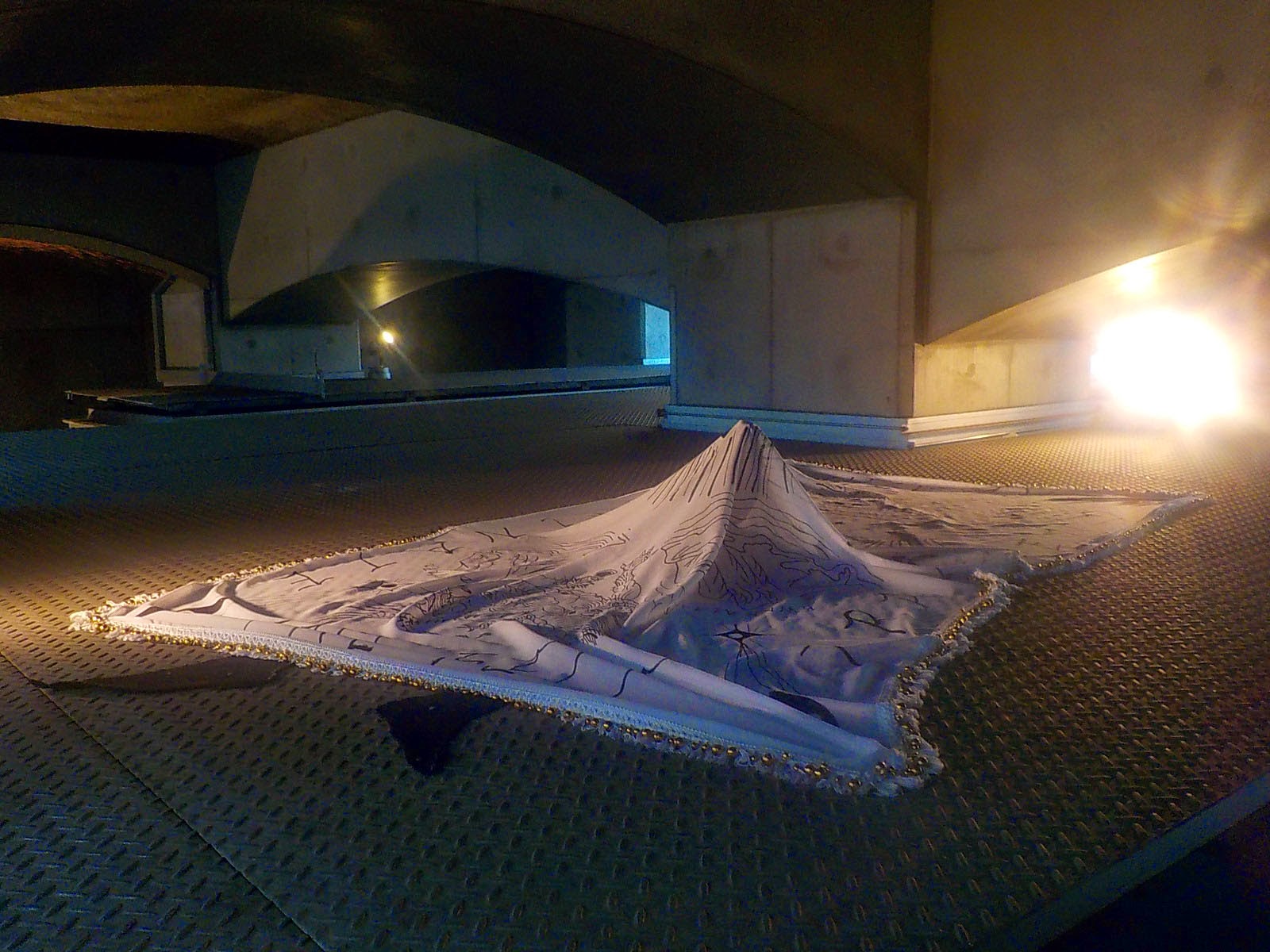UnangAgos
Zeus Bascon | Sergio
Bumatay | Mica Cabildo
Outlooke Pointe Foundation
Brochure text:
UnangAgos,
Filipino for “first stream/current”, is the first of a series of exhibitions byOutlooke
Pointe Foundation (OPF) Artist Summit participants. Artists are given free rein
to choose their exhibit concept under the guidance of OPF. For this exhibition,
artists Zeus Bascon, Sergio Bumatay and Mica Cabildo immediately took to the exhibit
venue. They chose to focus on the site of the Cultural Center of the
Philippines, with its rich history and aesthetic inundations. Each of the
artists’ work echoes the Center’s proximity to Manila Bay, a body of water often
associated with the imposing building that houses thehallway gallery. UnangAgos is an exploration of OPF’s enduring vision of constantly seeing
things with a new perspective, of expressing passion for the nation through
creative expression that eludes any labels traditionally attributed to art.
Based in Laguna,artist ZeusBasconoften makes mixed media
work from materials that are readily available or familiar to him. He was a
participant of the Tagaytay Artist Summit in 2009. His work for this exhibit, Promises ii, is an installation that engages
the social and spatial aspects of artistic presentation. A natural forager, he
makes use of beads, bells, pearls,and chains of all
colors to create a fishing net worthy of the Center. The materials
he chose vernacularly make up adornments or decorations for those who practice
a certain kind of, as the artist describes,“faith/fate”. These ornaments carry
heavy meaning within them, not unlike the halls of the Cultural Center. But contrasting
the magnificence of the building and its history, the materials are also
fundamentally crude, inexpensive, and generic.
Bascon’sintention lies in the process of drawing out
the viewer's interaction with an invented mythology thereby creating an
alternate religion of sorts. Each viewer positions their own belief
in the seemingly familiar imagery. Viewers are drawn by the display which
questions what they venerate and how they define beauty. They are also reminded of items they’ve once
lost, maybe not at sea, but in their own tumultuous lives, forming a narrative
in their mind.
Sergio Bumatay also makes up the exhibitUnangAgos.An illustrator at heart, he is known for the fascinating
characters and dreamlike worlds that he creates in children’s books and on
canvas. He participated in the 2009 Artist Summit held in Panglao Island,
Bohol.
Bumatay’s series of paintings for this exhibition, not
unlike the exhibit concept itself, went through quite a series of processes. As
he made his work and discussed with his fellow artists, Bumatay eventually
wound up using glass as his main material surface. He was inspired by glass
bottles, portholes and vehicle windows, which presented to him an internal
artistic adventure that was totally new to the artist. He attempted for the
first time to try reverse painting techniques,
using glass with acrylic medium.
Collectively titled Through
the Looking Glass, Bumatay’s paintings remind viewers of drawing on frosted or dusty glass with their fingers as
children. It frames passenger scenes and maritime narratives. Viewers are provoked
to look inside the paintings and become spectators ofvarious travelling
characters, while their own faces and surroundings reflect back on them.
Mica Cabildo, on the other hand, diverts her attention from
the personal or introspective. She creates an installation informed by her work
as a graphic designer and by her experiences as a multidisciplinary artist. A
participant in both the Tagaytay (2009) and Benguet (2010) Artist Summits, she constantly
works with varied materials in her art practice, which includes installation, traditional
crafts, and performance.
Cabildo’swork for the exhibit, entitled Cabo Negro (Black Out),is composed of wall-bound mixed media works,
small fiber sculptures and a mural. It began with, similar to her fellow artists,
an interest in her initial material of choice, which was rope, particularly the
indigenous rope used in the construction of the balangay, a pre-Hispanic form of transportation used for water
travel. Wood planks are sewn together with rope to make the body of the boat.
The installation explores the visual & graphic play ofher materials,wood
and rope, how each once manifests itself, and how they are viewed, particularly
with the additional element of LED lights.
The Philippines is blessed with beautiful summers that have
their days of extreme heat, but are also plagued with deadly rains, and
stubborn and petty as we are, these inescapable conditions
bind us together.Cabildo depicts phenomena caused by extreme exposure to the
elements while on voyage such as the darkening of the skin (negro), andsnow blindness via her rope
lights.
The three artists of UnangAgos,
different as their artistic tendencies are, somehow all find inspiration in the
materials that burden them. They are all slaves to their artistic media. But
before concepts arise from their material, they are firstly informed by their
surroundings. Exhibiting in the Pasilyo
Vicente Manansala of the CCP, with its view of the Roxas Blvd. and the adjacent
Manila Bay,finds both merit and contemplation in the three young artists.
The Outlooke Pointe Foundation (OPF),
established in 2007, is a non-profit organization with the vision of rekindling
passion for the country through artistic and cultural initiatives. One of its
major initiatives under the visual arts is the Artist Summit. Each Artist
Summit has provided opportunity for visual artists to engage socially and
creatively in new environments with the underlying mission of continued
artistic interaction. With its four Artist Summits to date, Bohol (2009),
Tagaytay (2009),Benguet (2010) and Dumaguete (2012), OPF continually aims in
tapping the nationwide potential of developing and exchanging ideas on
contemporary art. By providing studio space, materials, workshops and artistic consultation
to up-and-coming artists, OPF’s Artist Summits have essentially been bringing
artists from different backgrounds together, thereby creating a nationwide
dialogue of art and the fostering of art communes. (MRAE, 2014)
-------------------------------------------------------------------------------------------------------- -
 |
| Promises ii |






.jpg)










.JPG)

































